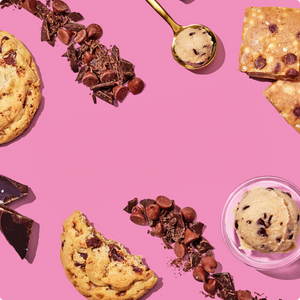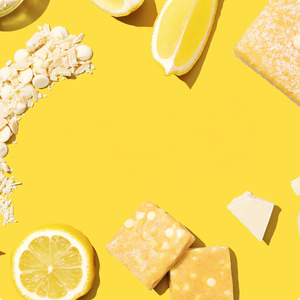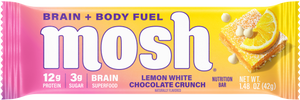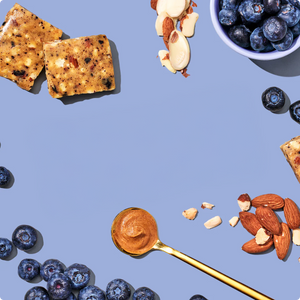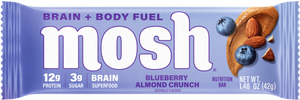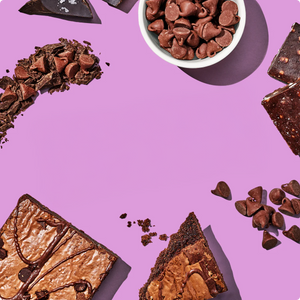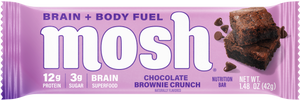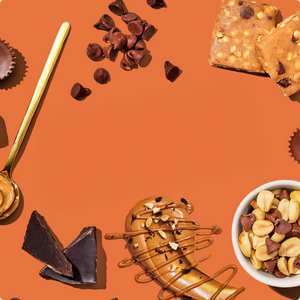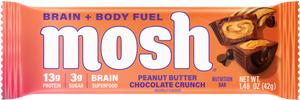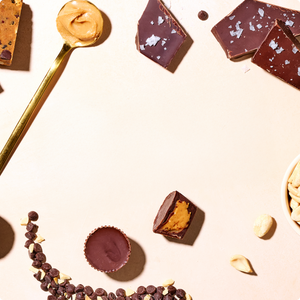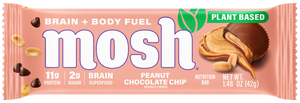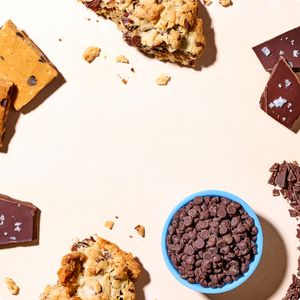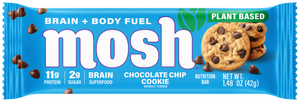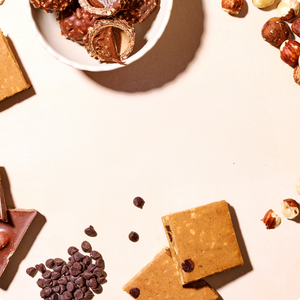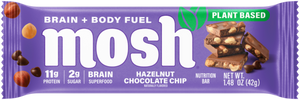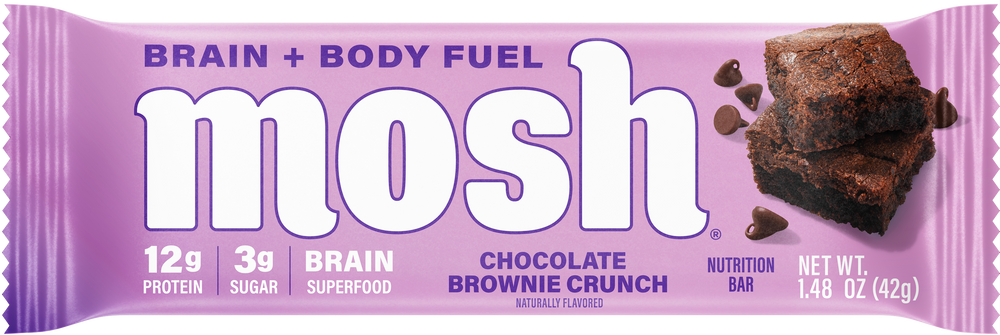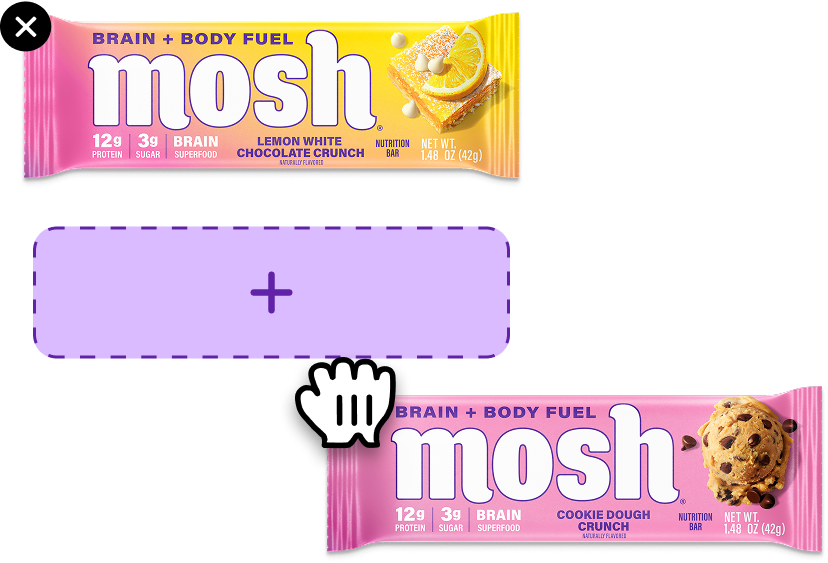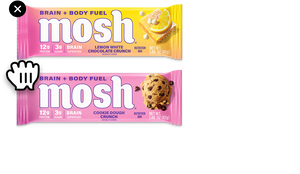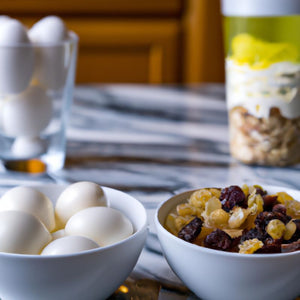Going to your local grocery store will present a few hundred snack options. After all, there are usually a few aisles dedicated solely to snack foods like chips, crackers, cookies, popcorn, pretzels, and all kinds of other tasty treats. The problem is that most of them aren’t very nutritious.
Not only are these snack foods often loaded with calories, but they’re also packed with refined carbohydrates, sugar, and salt. It’s generally best to limit your intake of these foods when possible.
Fortunately, it’s not too difficult to replace them with healthier options. You can easily substitute them with morning snacks to start your day off right or afternoon snacks to give you an extra boost after lunch.
These options likely aren’t as convenient as prepackaged snacks, but they'll be much better for your overall health.
The key to finding the perfect alternative easy snack is to look for snacks that are high in protein and low in calories. Protein is much better at making you feel fuller for longer than carbohydrates or fat.
Why Is Protein Important?
Protein is much more than just something that can help you feel full. It’s a macronutrient (along with fat and carbs) that your body uses for many different functions.
Every part of your body has some amount of protein. Bones, muscles, organs, skin, hair, nails, and even your blood use at least 10,000 different types of protein to function properly.
Most people know protein is extremely important for building and maintaining muscles. Protein acts as the primary building block for muscles, helping them grow and repair more easily. Without enough protein in your diet, it will be challenging to build new muscle, and your current muscles may start to shrink.
The intimate relationship between protein and your muscles is important, but that’s not all that protein does for you.
Protein also provides energy, transports materials (oxygen and other nutrients) throughout your body, balances your bodily fluids, supports your immune health, creates certain hormones, allows for metabolic reactions, and coordinates bodily functions.
So if you haven’t been paying attention to your daily protein intake, it might be time to start.
How Much Protein Should I Eat Each Day?
As mentioned earlier, protein is a macronutrient, meaning you need a lot of it daily. A well-balanced diet typically involves getting 45 to 65 percent of your daily calories from carbohydrates, 10 to 35 percent from protein, and 20 to 35 percent from fat.
If you were to follow a 2,000-calorie diet, that would translate to 900 to 1,300 calories from carbs, 200 to 700 from protein, and 400 to 700 from fat.
On the other hand, there are a ton of different diets that feature various dietary restrictions. The best diet for you might recommend a much higher protein intake, depending on your goals.
The Stillman Diet, for example, suggests that you get at least 64 percent of your daily calories from protein. Following this diet would mean at least 1,280 calories from protein for a 2,000-calorie diet.
Following the Stillman Diet would require drastic changes to your diet and lifestyle. If you’re unsure whether it’s right for you, you can start with the basic protein requirements (or preferably, have a chat with your primary care provider).
The minimum protein allowance to prevent muscle deficiency is to consume 0.8 grams per kilogram of your body weight. For those that don’t use the metric system, that’s roughly 0.36 grams for each pound you weigh.
5 Low-Calorie Snacks That Are High in Protein
Now that you have a target range for your daily protein requirements, we can get down to business.
It isn’t particularly difficult for the average American to get enough protein. The challenging part comes with finding ways to limit the calories that can come with it. It’s especially hard when you’re trying to find snack foods that meet these criteria. The good news is that we’ve prepared a list for you!
Here are five examples of healthy snacks that are high in protein and low in calories (and a few honorable mentions):
Jerky
Sometimes the most obvious answer is the best one. Jerky is a time-tested snack food that’s been around for centuries. This simple snack is the perfect starting point for anyone looking to boost their protein intake.
Jerky is merely strips of meat that have been trimmed of fat, dried out, and seasoned. Beef jerky is the most common type, but you can find chicken, turkey, pork, salmon, tuna, venison, elk, ostrich, and even alligator jerky.
There is even plant-based jerky out there for vegetarians! Plant proteins offer a great way to increase protein for vegans and those watching their meat intake.
The best part of jerky is that it comes in a vast array of different flavors. You can try out original, mild, sweet, spicy, garlic, teriyaki, pepper, or BBQ, just to name a few. The flavor possibilities with jerky can be overwhelming, so it might take a while to find your favorite.
The key thing you need to be careful about with jerky is that store-bought varieties can often feature a large amount of added sugar.
That said, if you can’t find a lower-sugar option you like, it’s worth trying to make your own jerky at home using a dehydrator, which is fairly easy to get at any big box store. You’ll be able to avoid all the calories from added sugar, you can season the jerky to your taste, and you can use your meat of choice.
Hard Boiled Eggs
There are few foods out there that provide as many nutrients as eggs. Not only does a single egg contain about six grams of protein, but it’s also loaded with choline, selenium, iodine, phosphorus, and vitamins B6, B12, and D.
All these nutrients come with next to no carbohydrates and only 78 calories. Calling eggs a “superfood” is appropriate, but it still undersells their overall nutritional value.
The thing that you need to be careful about with eggs is that they do contain quite a bit of cholesterol. A normal egg contains about 187 milligrams of cholesterol, which is very close to the recommended maximum for cholesterol intake.
However, the good news is that the cholesterol found in eggs isn’t the same as that from trans and saturated fats. Fat-based cholesterol has a much more negative effect on your blood cholesterol than the kind found in eggs. If you are still concerned about the cholesterol in eggs, feel free to eat only the egg whites.
It’s recommended to only eat up to two hard-boiled eggs each day. That would give you about 12 grams of protein, which should be more than enough to squash your hunger. Feel free to pour on a little salt, pepper, or hot sauce to give them some zest.
Greek Yogurt Parfait
It can be quite a challenge trying to satisfy a sweet tooth healthily. The options on this list aren’t going to hit that sugary sweet spot quite as hard as a candy bar or bowl of ice cream.
Fortunately, an option can exist in the middle: the parfait.
The key to making a health-conscious, nutritious parfait is to use Greek yogurt. Substituting regular yogurt with the Greek variety will significantly reduce the sugar content while still providing you with many nutrients and probiotics.
One of the things that makes a Greek yogurt parfait such a great snack is the ability to customize it. You can easily add your favorite fruit to your parfait and sprinkle in some whole-grain granola or chia seeds to give it a nice crunch and some blueberries for sweetness.
You will need to be careful with how much granola you're adding. While it does come with a bit of protein, it’s also pretty high in calories. Make sure you’re keeping a close eye on the amount of granola you’re including.
Trail Mix
Trail mix is another snack idea that’s both extremely customizable and convenient. It’s so convenient that it’s commonly enjoyed while hiking on trails, where it gets its unique name.
There is no locked-down definition of trail mix, but it typically involves some variety of nuts, seeds, and dried fruit. In most cases, trail mix also features dark chocolate chips to add a little sweetness.
The thing about trail mix is that it can secretly contain a lot of calories. Hikers don’t just prefer it for the sake of convenience. It’s a snack food that can provide energy with just a few handfuls.
You’ll want to be careful about the trail mix you eat, as most store-bought versions are loaded with calories, and often have candy-covered chocolate bits for that sweet punch.
Thankfully, it’s simple and even fun to make your own trail mix at home.
Since the main purpose of your trail mix is protein, you should start with nuts and seeds that have the most of them. Hemp seeds, pumpkin seeds, peanuts, almonds, pistachios, and sunflower seeds are all excellent protein sources.
Start with them as a base and slowly work in some dried fruit and chocolate to give it some flavor. Just be careful not to overdo it, as the calorie count can quickly skyrocket.
(Some) Protein Bars
Most of the other items on this list will require some amount of preparation. There’s no guarantee that you’ll always have enough time to dedicate to your snacks.
It can be hard to stick to healthy snack foods on days when you just don’t have any time. Fortunately, you can always grab a protein bar on those days to get the protein and nutrients you’re looking for when you’re short on time.
The thing about eating protein bars is that you have to be selective. Not all protein bars are the same. Many of them are little more than candy bars with some protein stuffed inside.
The good news is that there are nutritious protein bars out there — you just have to know what to look for in a high-quality protein bar.
Finding the right protein bar will require you to review the nutritional labels of each option. Ideally, a protein bar that uses high-quality protein (think whey protein isolate and milk protein concentrates), doesn’t have added sugar, is high-fiber, has a high ratio of healthy fats, and is low in carbs checks the boxes.
Honorable Mentions
We don’t have the space to talk about every low-cal, protein-rich snack, but here is a quick list of honorable mentions and their protein content:
- Cottage cheese - 25g per cup
- Edamame (soybeans) - 17g per cup
- Roasted chickpeas - 7g per ½ cup
- Hummus and veggies - 8g per ½ cup
- Apples and nut butter (almond butter or peanut butter) - 3 to 4g per tbsp
- Protein shake with protein powder - varies based on ingredients
- Cashews - 5g per oz
- Ham and string cheeseroll-ups - varies based on ingredients
Pick the Right Snacks To Give Your Body the Protein It Needs
It’s easy to simply opt for a bag of chips, candy bar, or another delicious snack when you’re looking for a quick bite to eat. While these options can be tasty, they’re also generally loaded with calories and can lack nutritional value.
Instead of taking the convenience store path, consider some of the snacks listed above. Their high protein concentration will do a lot more for you than junk food!
Sources:
16 Nuts and Seeds High in Protein | My Food Data
Celebrate National Trails Day With a Historic Snack—Trail Mix | Iowa Natural Heritage Foundation
Cholesterol Content of Foods | Patient Education | UCSF Health
The Golden Egg: Nutritional Value, Bioactivities, and Emerging Benefits for Human Health | PMC
What Is the History of Jerky? | USDA
How Much Protein Do You Need Every Day? | Harvard Health
A High-Protein Diet for Reducing Body Fat: Mechanisms and Possible Caveats | PMC
Exercise and the Institute of Medicine Recommendations for Nutrition | NCBI Bookshelf
Physiology, Proteins | NCBI Bookshelf
Macronutrients and Human Health for the 21st Century | PMC
Protein, Weight Management, and Satiety | NCBI Bookshelf
The Science of Snacking | The Nutrition Source | Harvard School of Public Health


